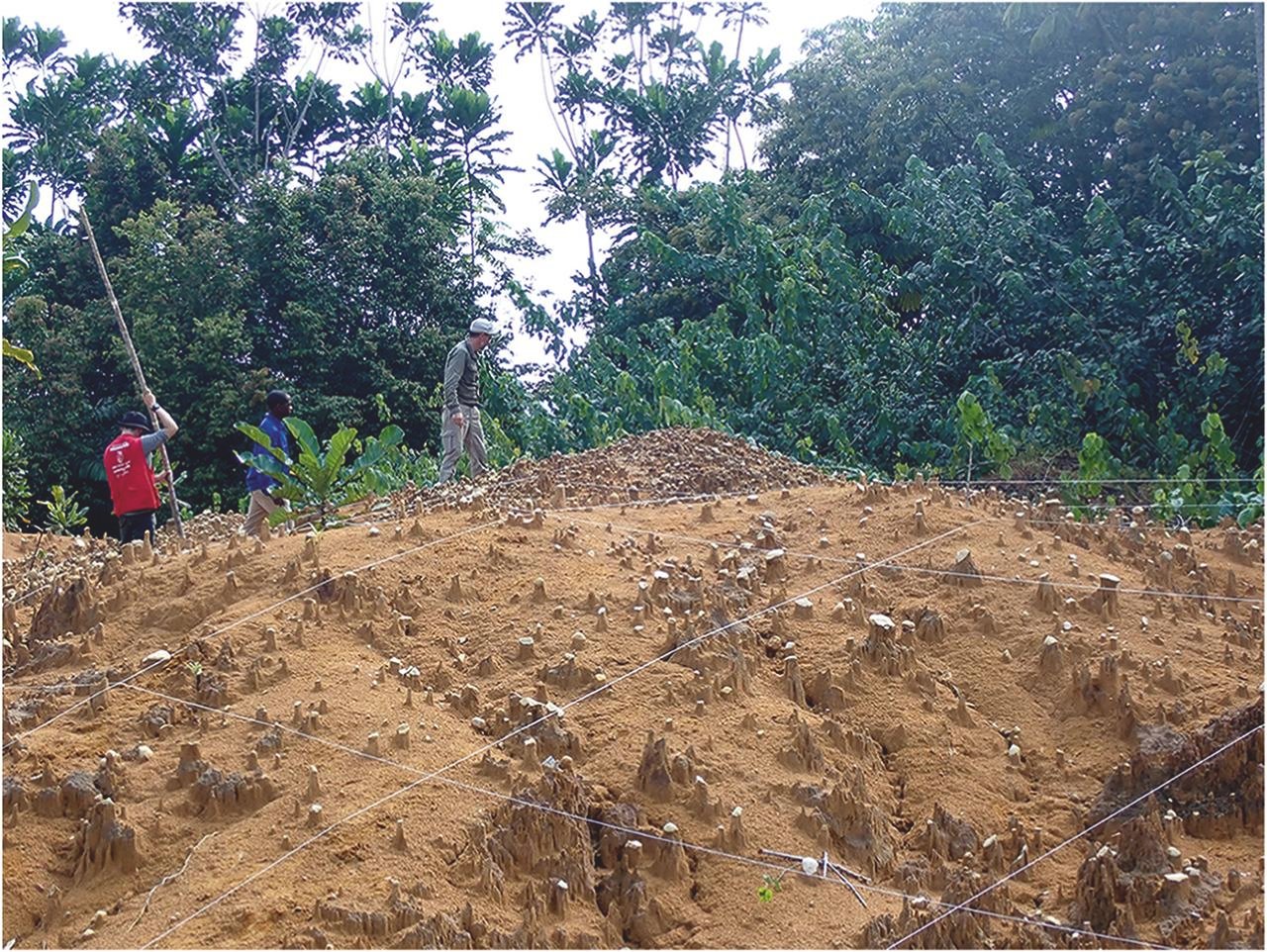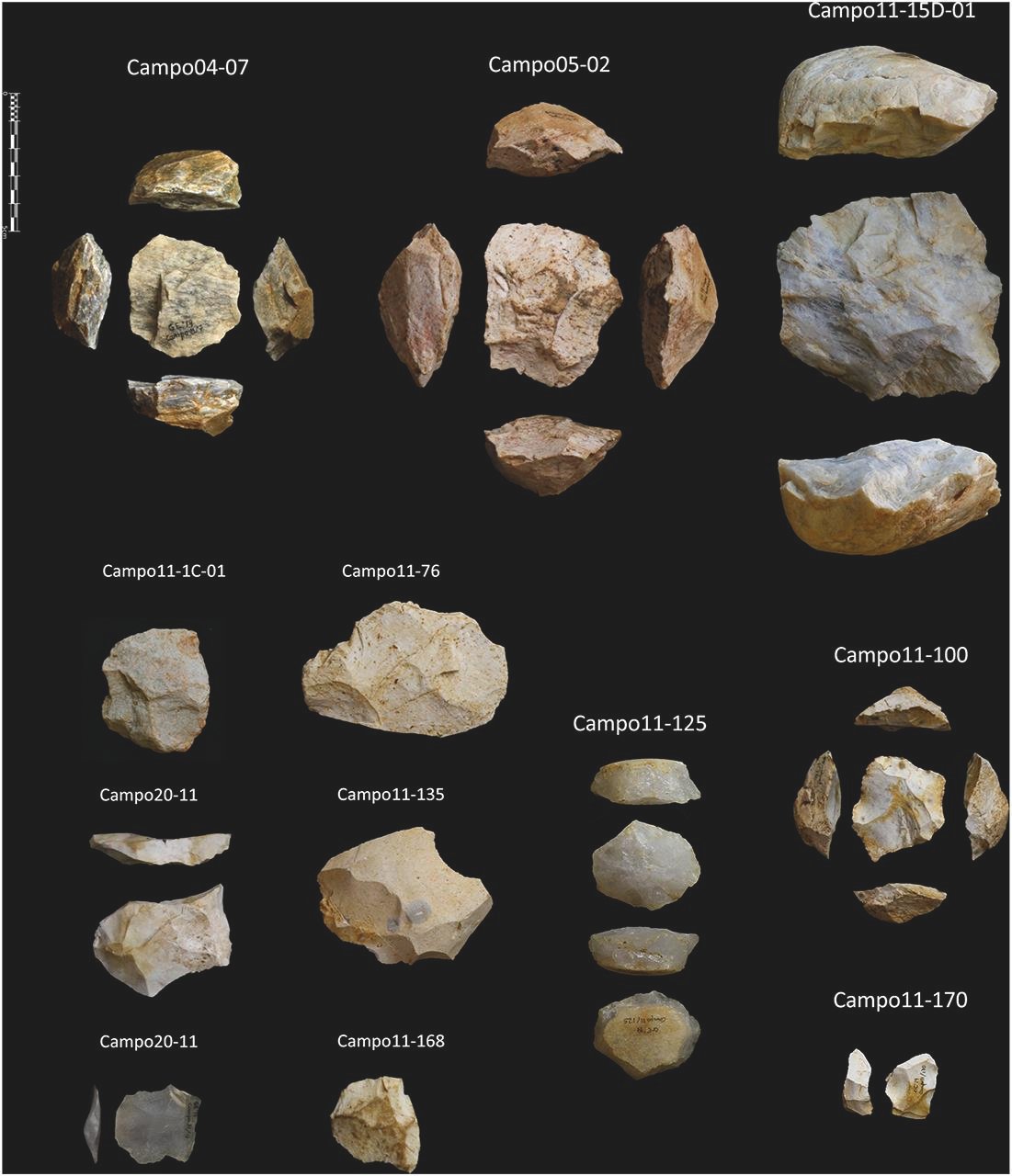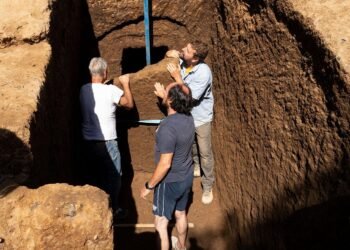Excavations in the Río Campo area of Equatorial Guinea have, for the first time, provided evidence of the systematic occupation of the Central African rainforest by Homo sapiens over 40,000 years ago. For the first time, there is evidence of human presence in this kind of hostile ecosystem during the Upper Pleistocene.

The discovery, in which MNCN-CSIC and IPHES-CERCA have participated, reveals the capacity for adaptation and ingenuity of early human populations to settle in those extreme environmental conditions.
Researchers have excavated 30 stratigraphic outcrops. They uncovered 16 containing lithic tools. The 418 artifacts included several bifacial points, Levallois cores, and heavy-duty tools. Those tools were essential for survival, hunting, processing materials, and navigation in thick vegetation and unpredictable resources. Radiocarbon and optically stimulated luminescence (OSL) dating place the age of the occupations between 76,000 and 20,000 years.
“The tools recovered at Río Campo demonstrate a technological tradition connected with other lithic industries in central and southern Africa, such as the Acheulean and Sangoan. This suggests a sustained transmission of technical knowledge over millennia and a deeply rooted cultural heritage,” said Dr. Juan Ignacio Morales, an expert in lithic technology from IPHES-CERCA.

Traditionally, studies on human evolution have centered on arid and semi-arid regions of Africa, and rainforests have been little explored. The findings emphasize Central Africa’s role in reconstructing the varied adaptive strategies of early humans. “With these results, we draw a map of prehistoric human behavior and place Central Africa as a cornerstone in the cultural and biological evolution of our species,” said Professor Antonio Rosas, lead researcher from MNCN-CSIC.
The findings at Río Campo also show that tropical rainforests—previously supposed to be inhospitable to human occupation—were an essential part of the evolutionary history of modern humans. The continuity of Middle Stone Age traditions, such as the Lupemban technocomplex, testifies to a presence that dates back hundreds of thousands of years.
The geomorphological study of the Río Campo area revealed a fluvial system from the Upper Pleistocene characterized by sandbars and shallow channels. Researchers found that successive erosive cycles erased much of the earlier sedimentary record, explaining the absence of older archaeological evidence.
The discoveries open new avenues for exploring how Homo sapiens adapted to extreme environments. Researchers plan to continue excavations and conduct multidisciplinary studies, including genomic analyses, to fill gaps in the evolutionary history of populations in the Central African rainforests.
Dr. Morales pointed out the greater implications of the findings: ‘The production of such intricate tools serves as further proof that Central Africa was a cradle of innovation and technological adaptation, playing a vital role in the history of Homo sapiens.’
More information: IPHES-CERCA

























Comments 0